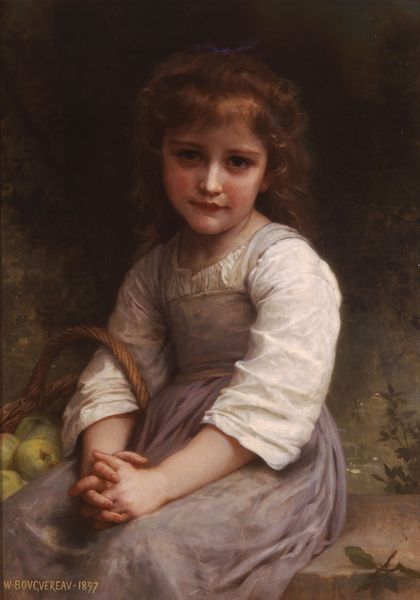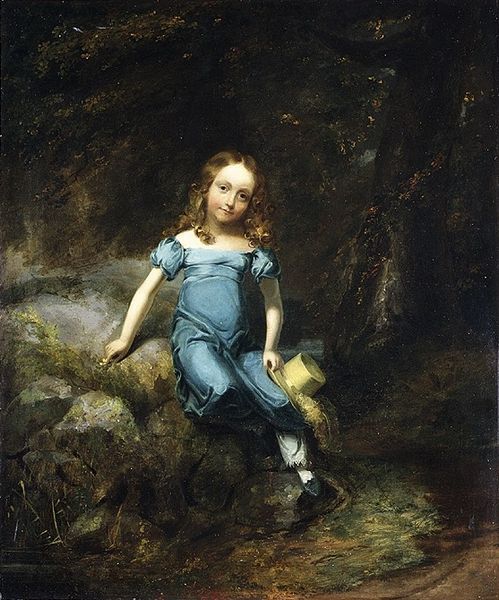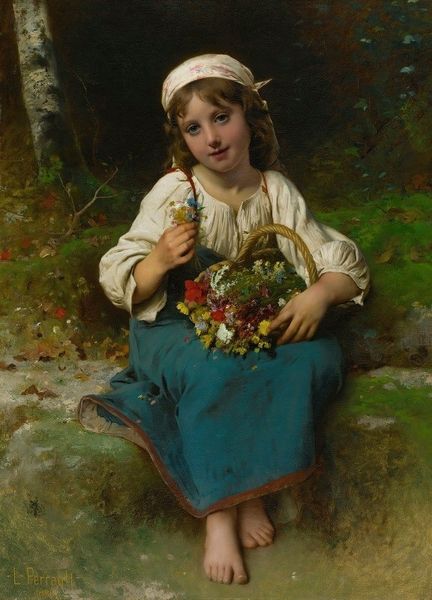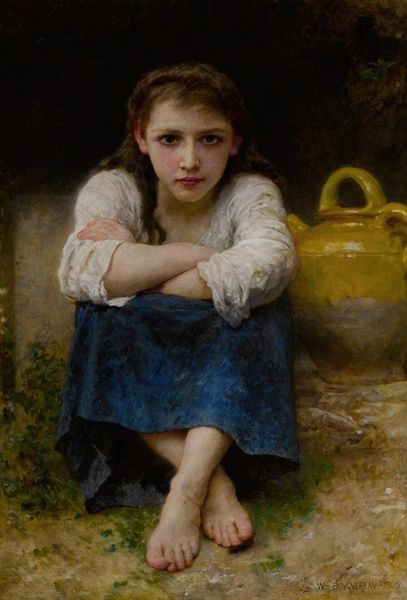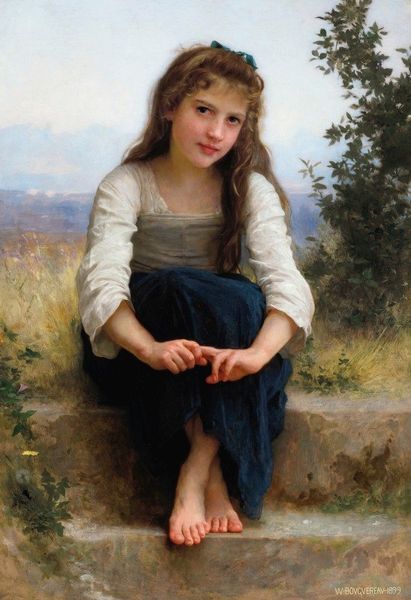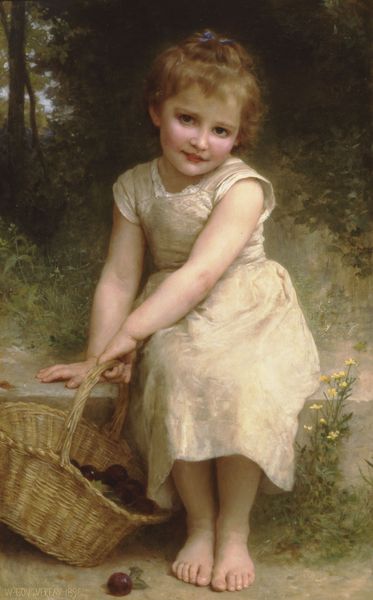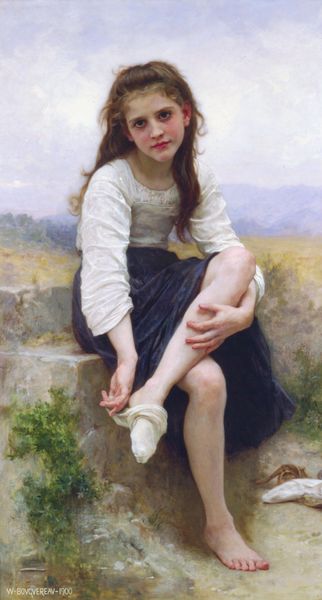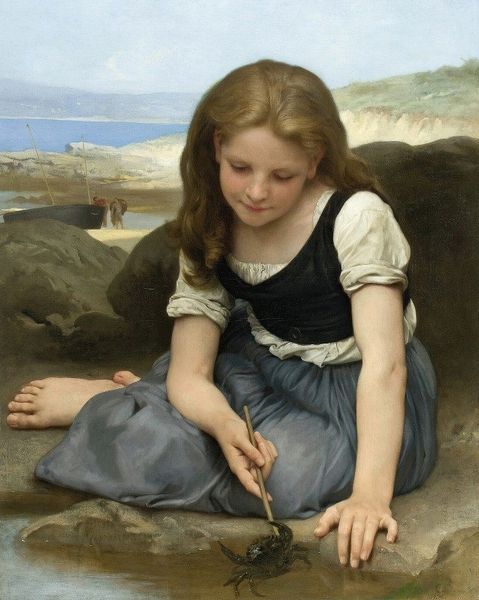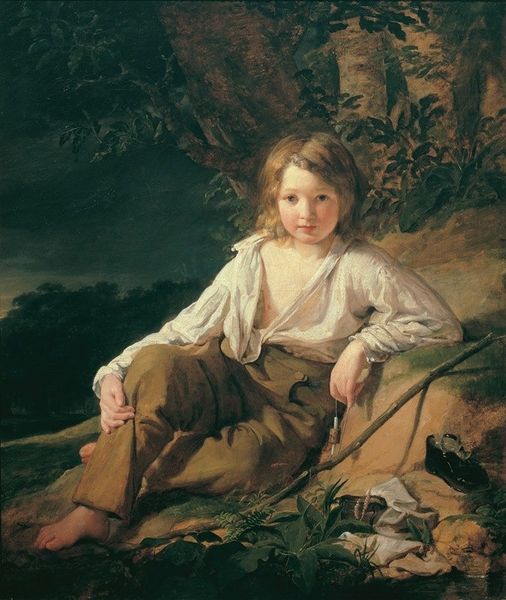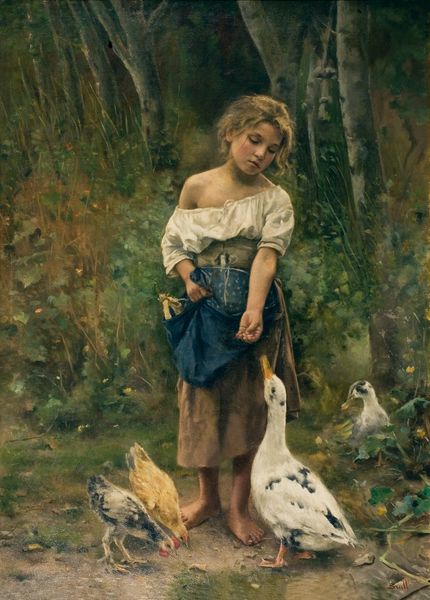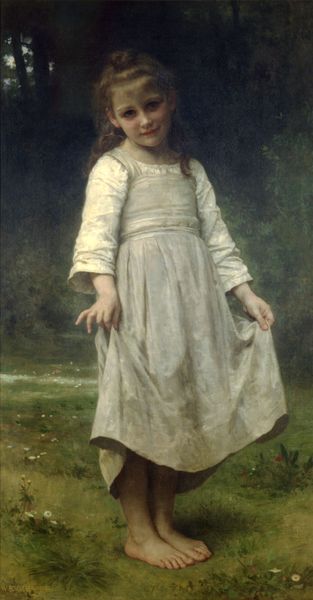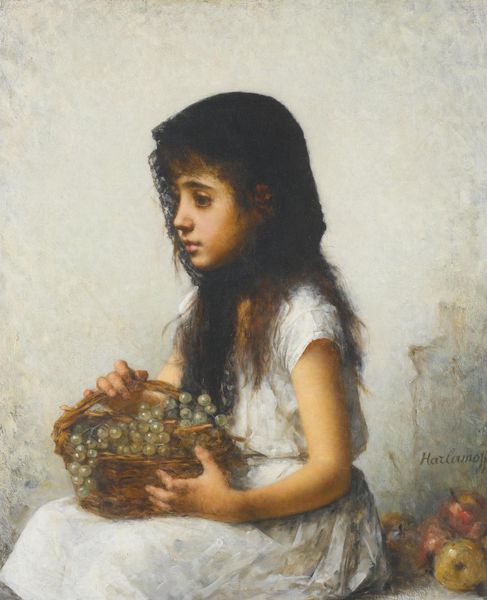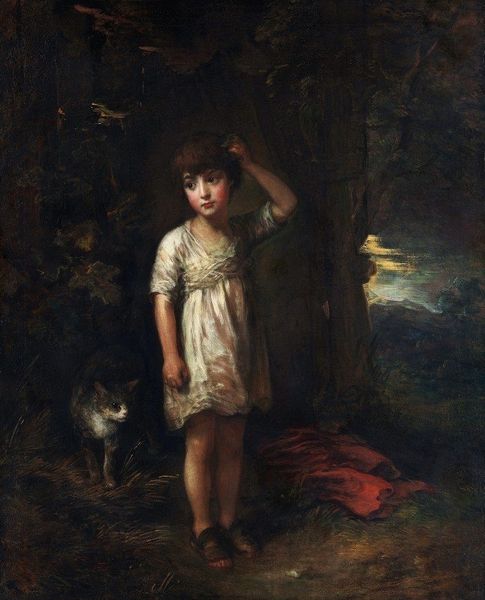
Copyright: Public domain
Editor: We're looking at "The Lumberjack's Daughter" by Léon Bazile Perrault, an oil painting from 1883. There's a palpable sense of melancholy; the girl’s bare feet and patched skirt, along with that heavy bundle of wood, suggest a difficult life. What do you see reflected in this image, considering its place and time? Curator: This piece provides a window into the sentimental depiction of rural life popular during the late 19th century. While seemingly a simple portrait, consider the romanticism interwoven with nascent realism. The artist presents us with a genre scene designed for consumption by a bourgeois audience increasingly distanced from the realities of peasant labor. The child becomes a symbol of rustic innocence, even poverty, presented in an idealized form. Does this representation feel authentic to you, or does it appear constructed? Editor: It does feel… curated. The darkness in the background almost frames her face, drawing your eye. Even her sadness feels… staged, somehow. Like it's playing into an idea of "poverty." Curator: Precisely. How do you think images like these shaped the contemporary viewers' perceptions of rural communities and childhood? Was it purely aesthetic, or did it carry a deeper socio-political impact? The museums and galleries of the time actively promoted these works, thereby solidifying a particular narrative around class and labor. Editor: So, in a way, this painting is doing more than just portraying a girl; it’s shaping ideas about social class for the people who were viewing it. That’s a bit unsettling, but makes me think about how images function in society. Curator: Exactly. It reminds us to look critically at the art and the institutions that support it. It’s fascinating to uncover these layers and question the underlying motivations behind such depictions.
Comments
No comments
Be the first to comment and join the conversation on the ultimate creative platform.
